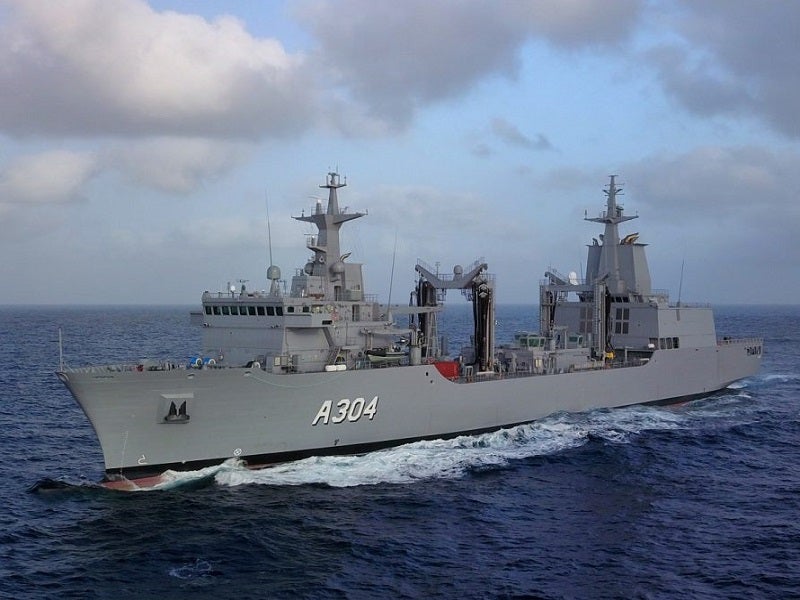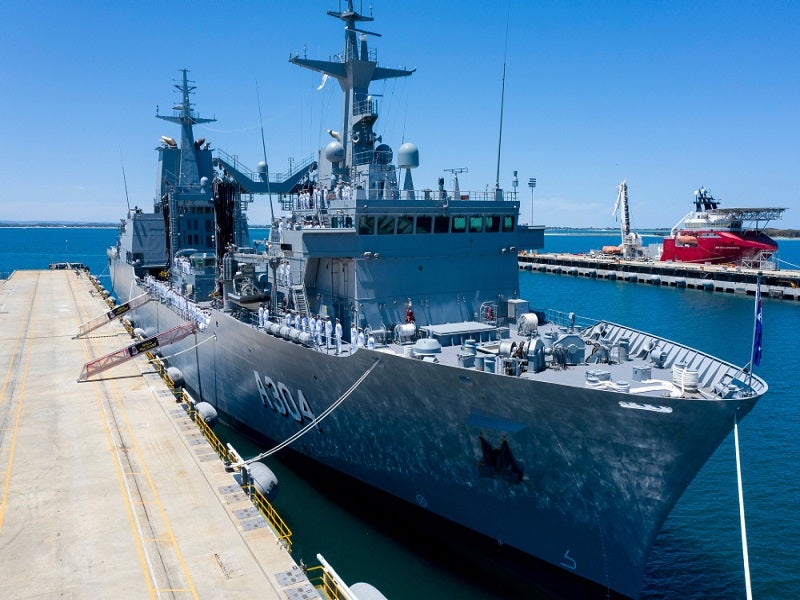The Supply class Auxiliary Oiler Replenishment (AOR) ships are a class of two new vessels built by Spanish company Navantia for the Royal Australian Navy (RAN). The vessels can be used to supply dry cargo, fuel, food, water, ammunition, equipment and spare parts to deployed naval or combat forces during missions on the high seas.
The Government of Australia acquired the two new AOR vessels to provide maritime support capability to the RAN under Phase three of the SEA 1654 programme.
Phase three of the SEA 1654 project was aimed at replacing the RAN’s existing replenishment ships HMAS Success and HMAS Sirius. The new replenishment oilers are based on the Spanish Navy’s SPS Cantabria AOR ship.
In addition to replenishment, the Supply class vessels can be used to combat environmental pollution at sea, provide logistics support for armed forces, and support humanitarian and relief operations following natural disasters.
Supply class AOR vessel development details
Navantia and the Defence Materiel Organisation of Australia signed a contract in October 2014 to conduct a risk reduction design study on the auxiliary replenishment vessels.
The Commonwealth of Australia awarded a $640m contract to Navantia for the construction and delivery of two AOR vessels in May 2016. The company also agreed to provide maintenance and support services for the ships over a period of five years.
Navantia cut steel for the first Supply class AOR ship in June 2018, after the successful completion of the critical design review. The HMAS Supply was launched at the company’s Ferrol facilities in November 2018. The sea acceptance trials of the ship were completed in August 2020, while its commissioning took place in April 2021.
The HMAS Stalwart (III), the second AOR ship in the Supply-class, was inducted into the Australian Navy in November 2021. The Capability Acquisition and Sustainment Group AOR Systems Program Office (SPO) of the Australian Department of Defence established the AORSPO Enterprise with Navantia Australia in order to support the AOR capability throughout its lifecycle.
Design and features of RAN’s new AOR ships
The RAN’s new replenishment oilers were built with a double hull design in compliance with the International Maritime Organisation’s (IMO) International Convention for the Prevention of Pollution from Ships (MARPOL) requirement.
Each vessel has an overall length of 173.9m, length between perpendiculars of 162m, displacement of approximately 19,500t and full-load deadweight of 9,800t. Its design draught and beams are 8m and 23m, respectively.
The vessel can accommodate up to 122 personnel, including the crew. The operators are seated in an enclosed, integrated bridge located in the forward portion of the ship.
The ship has a flight deck at the stern to support the operation of a single helicopter.
Capacities
The new logistics support vessels are equipped with fuel tanks, refuelling gantries and dry cargo holds for refuelling and resupplying multiple vessels simultaneously.
Each vessel can supply 470t of provisions and has the ability to hold 1,450m³ of JP-5 jet fuel, 8,200m³ of marine diesel fuel, 140m³ of fresh water and 270t of ammunition.
Up to four fuel stations are fitted on the port and starboard sides of the vessel for the transfer of fuel to other ships. A single station is provided at the aft to refuel ships with marine diesel fuel. The ship receives JPS fuel and fresh water through two stations each.
Additionally, the ships have four diesel fuel reception stations.
Sensors on board RAN’s Supply class AOR logistics vessels
The RAN’s new fleet support tankers are equipped with a range of sensors, including identification, friend or foe (IFF), radar electronic support measures (ESM), FLIR thermal imaging camera, LINK 11 tactical data link, global positioning system (GPS) / differential GPS (DGPS), gyrocompass, echo sounder and speed log. A Maritime Command and Control Information System (MCCIS) is installed to provide situational awareness for the operators.
The ship is equipped with an integrated platform management system (IPMS) which features an open architecture. The IMPS comprises multiple sensors, shipboard equipment, process-work flows and diverse information flows, including historical, static, dynamic, active and real-time.
The IMPS control system can provide critical data in real-time through a visual simplified systems overview, 3D view of the systems and geo-location of subsystems in the ship compartments.
In addition, it enables efficient maintenance through powerful data analytics. The damage control feature of the system provides emergency management and assists the operators in decision-making during emergency situations.
Propulsion and performance of Supply class AOR ships
The propulsion system of each Supply class AOR vessel includes two four-stroke, in-line MAN 18V 32/40 main engines and four MAN 7L21/31 IMO Tier II marine generating sets.
Each engine develops an output power of 9,000kW at speeds ranging between 720rpm and 750rpm. The power generating capacity of each generating set is 1,500kW at 1,000rpm.
The AOR ships have a maximum speed of 20k. The vessels can conduct underway replenishment up to a distance of 6,000nm when travelling at a speed of 13k.
Contractors involved
Australian steel products manufacturer BlueScope supplied approximately 4,500t of steel for the AOR project.
The IPMS solution for the AOR ships was provided by NSAG, a joint venture between Navantia and Australian industrial automation and control solutions expert SAGE Automation, under a A$2.8m ($2.12m) contract awarded in May 2017.
Offshore and defence engineering services provider Taylor Bros was appointed to provide a range of services, including hospital, laundry and galley fit-outs.
Defence contractor Saab Australia supplied the combat management systems, while the communication systems were supplied by Raytheon Australia.
MAN Diesel & Turbo received an order from Navantia in March 2017 to supply main engine and generator sets for the vessels. OSI Maritime Systems executed a contract with Navantia in October 2016 to deliver two integrated bridge systems (IBS) for the AOR vessels.










